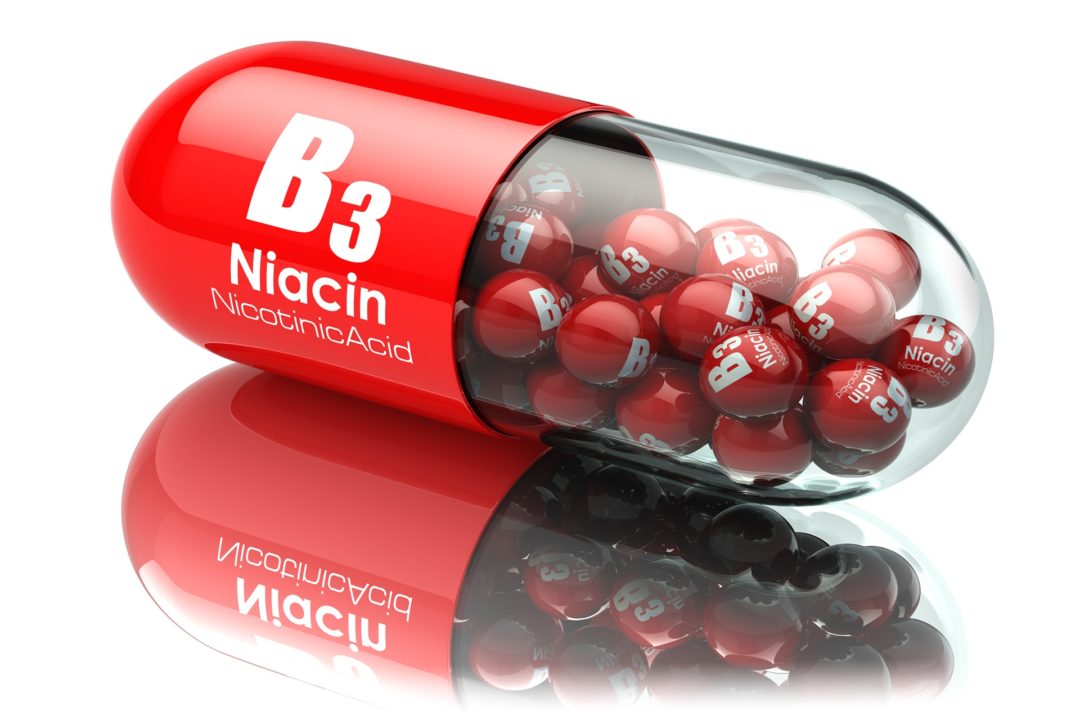There are many types of arthritis. The U.S. Centers for Disease Control and Prevention (CDC) reports that arthritis is the most common cause of disability in the United States, limiting the activities of nearly 21 million adults. The word arthritis means joint inflammation. Per the CDC, the term is used to describe more than 100 rheumatic diseases and conditions that affect the joints, the tissues that surround the joints and other connective tissue.
The most common form of arthritis is osteoarthritis (OA), also known as degenerative joint disease or wear-and-tear arthritis. It is characterized by degeneration of the joint cartilage, which acts as a cushion between bones to prevent them from rubbing against each other. The constant friction breaks down these tissues, triggering the inflammation that eventually leads to pain and joint stiffness. The joints most commonly affected are the knees, the hips, and those in the hands and spine.
According to the CDC, OA of the knee is one of five leading causes of disability among adults. About 80% of people with OA have some degree of movement limitation and 25% cannot perform major activities of daily living.
Rheumatoid arthritis (RA), an autoimmune condition, is a chronic inflammatory polyarthritis, meaning that it manifests in multiple joints of the body. The inflammatory process primarily affects the lining of the joints (synovial membrane), but it can also affect other organs. The inflamed synovium leads to erosions of the cartilage and bone and sometimes to joint deformity. Pain, swelling, and redness are common joint manifestations.
Chapter Seven of Dr. Saul’s book, coauthored with Drs. Abram Hoffer and Harold Foster, entitled “Niacin: The Real Story,” discusses reversing arthritis with niacinamide. It’s an amazing story.
Dr. Andrew W. Saul has been an orthomolecular medical writer and lecturer for 41 years. Dr. Saul has taught clinical nutrition at New York Chiropractic College and postgraduate continuing education programs. He was also on the faculty of the State University of New York for nine years. Two of those years were spent teaching for the university in both women’s and men’s penitentiaries (no, not as an inmate).
Dr. Saul is editor-in-chief of the Orthomolecular Medicine News Service and has published over 200 peer-reviewed articles. His bestselling book “Doctor Yourself” has been translated into eight languages. He has written a dozen other books, four as coauthor with Abram Hoffer, MD. Dr. Saul’s educational website is www.DoctorYourself.com, the largest peer-reviewed, non-commercial natural healing resource on the Internet. He is a board member of the Journal of Orthomolecular Medicine and the Japanese College of Intravenous Therapy. Saul was inducted into the Orthomolecular Medicine Hall of Fame in 2013. He is featured in the documentaries “FoodMatters” and “That Vitamin Movie.”
Passwater:Dr. Saul, the incredible clinical results from more than 60 years show that niacinamide not only relieves the pain of arthritis, but over time, leads to repairing the joints. Since arthritis is an inflammatory condition, does niacinamide work by reducing inflammation?
Saul:Evidently it does. In 1996, a study on niacinamide and osteoarthritis was published in the journal Inflammatory Research (Jonas WB, Rapoza CP, Blair WF. The effect of niacinamide in osteoarthritis: a pilot study. Inflammatory Research 45:330–334). The authors could have omitted the words “pilot study” from their title. Dr. William Kaufman had already published, 47 years earlier, his meticulous case notes for hundreds of patients, along with specific niacinamide dosage information applicable to both osteoarthritis and rheumatoid arthritis.
In addition, the doctor added some remarkably prescient observations on the antidepressant-antipsychotic properties of B3. Dr. Kaufman, whom his widow has described as a conservative physician, was nevertheless the first to prescribe as much as 5,000 mg niacinamide daily, in many divided doses, to improve range of joint motion. A summation of his niacinamide therapy (pages 20-29 of his book) is posted atwww.doctoryourself.com/kaufman5.html.
Passwater:Do the findings apply to both OA and RA?
Saul:Yes. Dr. Kaufman said: “The relationship between the continuous administration of adequate amounts of niacinamide and improvement in both hypertrophic arthritis and rheumatoid arthritis was originally reported in 1943.” That was the year Dr. Kaufman’s book, “The Common Form of Niacinamide Deficiency Disease: Aniacinamidosis” was published.
Passwater:How was this discovered?
Saul:Observation. Dr. Kaufman paid attention to, and spent a large amount of office time with, each and every one of his patients. Dr. Abram Hoffer considered him a superb clinician.
Passwater:Dr. Kaufman detailed his clinical findings in his 1949 book, “The Common Form of Joint Dysfunction.” That book contains a lot of information on the proper protocol to use for niacinamide in treating arthritis, but since it’s a 1949 book, it probably can’t be found in bookstores. Your book summarizes some of it, but is there a way that our readers can find out more?
Saul: Indeed they can. The late Mrs. Charlotte Kaufman graciously gave me exclusive permission to post the entire text of this important book at my website,www.doctoryourself.com.
Here is an overview, with direct links:Chapter 1(www.doctoryourself.com/kaufman6.html), which contains a fascinating passage about “decreased running” (ADHD), presents Dr. Kaufman’s niacinamide treatment protocol. He also used ascorbic acid, thiamin, and riboflavin, all in large doses. As his rationale and measurement methods begin the chapter, some readers may wish to scroll down directly to the section on dosage (“Methods of Treatment”) and read that first. The chapter closes with case histories and an insightful, practical discussion of patient management.
Chapter 2(www.doctoryourself.com/kaufman7.html), “Four Complicating Syndromes Frequently Coexisting with Joint Dysfunction,” discusses physical and psychological stresses, allergy, posture, obesity and other factors that may interact or interfere with niacinamide megavitamin therapy for arthritis.
Chapter 3(www.doctoryourself.com/kaufman8.html), “Coordination of Treatment,” is a brief summary of Dr. Kaufman’s practical recommendations for case management.
Chapter 4(www.doctoryourself.com/kaufman9.html), “Analysis of Clinical Data for the Untreated and Treated Population,” presents Dr. Kaufman’s meticulous records of patients treated with niacinamide.
Chapter 5(www.doctoryourself.com/kaufman10.html), “Some Inferences Concerning Joint Dysfunction,” shows Dr. Kaufman’s remarkable foresight half a century into the future of orthomolecular medicine. In this chapter, he describes how the lack of a single nutrient can cause diverse diseases; the need for a new way of looking at arthritis, and reviews his treatment and what level of success to expect.
All of the book’s 248 references are posted atwww.doctoryourself.com/kaufman11.html.
Passwater:Did Dr. Kaufman publish additional information on his clinical findings or practical use of niacinamide to treat arthritis?
Saul:Yes. For those who just cannot get enough of the work of this wonderful physician, a complete bibliography of Dr. Kaufman’s work will be found atwww.doctoryourself.com/biblio_kaufman.html.
Passwater:Have others confirmed Dr. Kaufman’s clinical findings?
Saul:Certainly. Those who follow his protocol duplicate his success.
Passwater:Why don’t more physicians treat their arthritic patients with niacinamide?
Saul:One cannot help but wonder why. Is it that vitamins only worked in 1949, and vitamins mysteriously lost their value? Or could it be that they are cheap and provide no profit incentive for large pharmaceutical companies? Or could it simply be that “megavitamin therapy” is never the answer to any medical school examination question?
Here is what medical schools should be teaching: Dr. Kaufman gave 250 mg of niacinamide every 1 1/2 hours for a daily total of ten doses. That is 2,500 mg a day, not at all more than many doctors today prescribe to lower serum cholesterol. The result was improved grip strength and joint mobility. Dr. Kaufman went on to treat close to one thousand patients with niacinamide plus the B-vitamins thiamin (B1), riboflavin (B2), pyridoxine (B6) and pantothenic acid. It will not surprise you that he also gave large doses of vitamin C. What will surprise you is that he started using vitamins to successfully treat arthritis as early as 1935, and niacin in 1937, immediately after it was identified.
Passwater: Amazing! Is there a safety issue with niacinamide?
Saul:Yes. Firstly, high-dose niacinamide or niacin therapy may elevate liver enzymes. The elevation is fairly common and usually modest. This, says Mayo Clinic niacin researcher William Parsons, Jr., MD, is not a sign of liver pathology. It is, Dr. Parsons says, a sign of liver activity.
Secondly, very high doses of niacinamide, that is, over 5,000 mg/day, may cause nausea. This may be eliminated by taking some of the dose as niacin. Of course, niacin causes a flush, which is harmless but to be expected. Niacinamide does not cause a flush. Dr. Kaufman used niacinamide because he personally did not like the flush when he experienced it! Either form is effective; either form is vitamin B3. Niacinamide is far safer than any drug. Any drug.
Passwater:In your book, you quote Dr. Kauffman (p. 85) saying “niacinamide has ungated entrance to the central nervous system. It has a strong affinity for the central nervous system’s benzodiazepine receptors and causes a pleasant calmative effect.” Dr. Saul, would you be kind enough to translate that into plain English for our readers who may not be medically trained?
Saul:It means that niacinamide calms you down, very much like a tranquilizer does. But there are no harmful side effects, and no addictive issues with niacinamide. In fact, niacin or niacinamide can be used to wean people off of tranquilizers. Niacin researcher Dr. W. Todd Penberthy and I reported on this in the Orthomolecular Medicine News Service in 2014 (www.orthomolecular.org/resources/omns/v10n09.shtml). Readers may also enjoy the comments made by Dr. Kaufman at in 1998 atwww.doctoryourself.com/kaufman3.html.
Passwater:Dr. Kaufman also noted that niacinamide increases muscle strength, decreases fatigability, and heals broken strands of DNA. Do you concur?
Saul:Yes. No pharmaceutical on the planet can do all that, and niacinamide is cheap. And safe. And non-prescription.
Passwater:Dr. Saul, we thank you once again for informing us about the health benefits of niacin and niacinamide. We look forward to continuing our discussion in future columns. In the meantime, readers may wish to visit Dr. Saul at his website www.doctoryourself.com.WF

Dr. Richard Passwater is the author of more than 45 books and 500 articles on nutrition. Dr. Passwater has been WholeFoods Magazine’s science editor and author of this column since 1984. More information is available on his website, www.drpasswater.com.
NOTE: The statements presented in this article should not be considered medical advice or a way to diagnose or treat any disease or illness. Dietary supplements do not treat, cure or prevent any disease. Always seek the advice of a medical professional before adding a dietary supplement to (or removing one from) your daily regimen. The opinions expressed in bylined articles are not necessarily those of the publisher.










